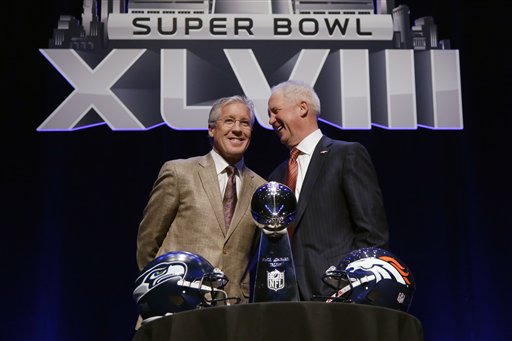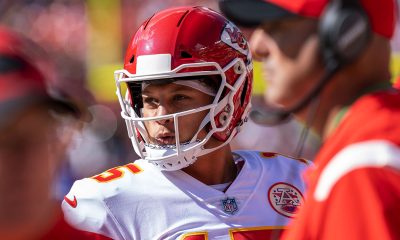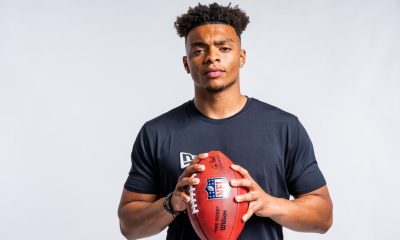Business
Diversity Study: Super Bowl Ads Less Gender Offensive


Seattle Seahawks head coach Pete Carroll, left, and Denver Broncos head coach John Fox laugh as they pose behind the Vince Lombardi Trophy before speaking at a news conference Friday, Jan. 31, 2014, in New York. (AP Photo/Matt Slocum)
STEVE REED, AP Sports Writer
While Super Bowl XLIX commercials were more sensitive and less gender offensive than in past years, women and people of color remain vastly underrepresented among the creative directors who are producing those ads, according to a diversity study released Wednesday.
The Institute for Diversity and Ethics in Sport at the University of Central Florida released its annual report showing the advertising industry’s continuing disparity in hiring practices in terms of race and gender.
The study found that of the 42 Super Bowl ads in 2015 for which data was available, only three — or seven percent — featured exclusively a person of color as the lead creative director. By contrast, 86 percent featured a white creative director and seven percent featured both a white person and person of color.
In terms of gender, 81 percent of the creative directors were male, 13 percent of creative directors featured both a male and a female. Only seven percent were exclusively females.
Richard Lapchick, the primary author of this study and director of TIDES, said that the percentage of people of color and women in creating and producing the Super Bowl ads hasn’t changed much.
“It’s one of those industries where there has not been much movement over the years,” Lapchick said. “The NFL and the Super Bowl audience is very diverse, and it’s just not reflected in the people who are preparing and creating these ads.”
The study also pointed out that of 61 commercials, 19 had African-Americans in a lead role, a significant increase since when the study was first conducted in 2011.
Lapchick believes that the key figures of Madison Avenue advertising agencies should mirror the NFL’s efforts when it comes to the improved hiring practices of people of color and women in recent years.
The adoption of the Rooney Rule, which increases the pool of minority coaching candidates, has helped the NFL has received an overall A grade for its racial hiring practice in each of the last five years. The NFL earned a C- for its gender hiring practices in 2014, for an overall grade of B.
Lapchick said he was pleasantly surprised with the overall content of this year’s Super Bowl commercials compared to recent years.
In previous years, Super Bowl ads routinely used gratuitous sexual content, gender stereotypes and gender roles to sell a company’s product or service. However, he said the use of sex to sell and objectifying women was very limited in 2015.
“As our team watched the Super Bowl and watched the individual ads there was a large degree of surprise at the non-stereotypical ads, but also the positive images that were being portrayed,” Lapchick said.
Lapchick also believes advertising directors were more sensitive about gender violence following the Ray Rice domestic abuse case and, to a lesser degree, the Adrian Peterson child abuse case.
“I think that had a tremendous impact on the ads this year,” Lapchick said. “… I don’t have any doubt that factored into not only the toning down of the ads, but the fact they were actually sensitive, particularly to gender issues.”
Racial and gender data was only available for 42 of the 61 advertisements aired during the 2015 Super Bowl, compared to 58 out of 66 in 2011. Lapchick said this was due to advertisement agencies being unwilling to provide the names of their creative directors for the respective advertisements.
The study finds that 50 of the advertisements were produced by major advertising industries, compared to 48 in 2011. The remaining 11 were produced in-house by corporate marketing departments or through third parties, by contest winners or other non-professionals.
___
AP NFL website: http://www.pro32.ap.org and http://www.twitter.com/AP_NFL
Copyright 2015 The Associated Press. All rights reserved. This material may not be published, broadcast, rewritten or redistributed.











































